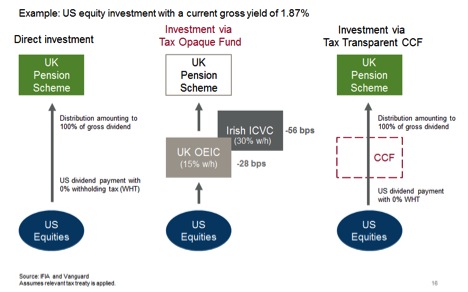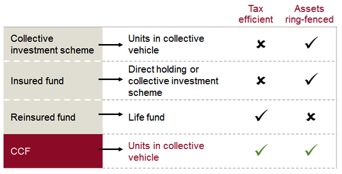Top tax tips for efficient scheme equity investing
UK pension schemes face several challenges when looking to gain exposure to overseas equities.
Among them is the need to ensure withholding taxes does not erode the benefits of their tax-advantaged status.
But not all fund structures allow schemes to profit from this status – and some of the structures that do can introduce other risks to a portfolio.
Minimising tax drag
Withholding taxes on foreign dividend payments can be a source of tax drag, which can have a substantial negative impact on a portfolio’s long-term performance.
But, due to the double taxation treaties the UK has with other countries, UK pension schemes are considered tax-advantaged investors in many key equity markets.
This status means they can be either exempt, subject to reduced withholding tax, or able to claim back all or part of the withholding tax on dividends from equity investments in these markets.
A scheme’s ability to benefit from its tax-advantaged status could, however, be impaired by the choice of investment vehicle.
If the scheme invests directly in US equities, it should receive 100 per cent of gross dividends.
If, however, it invests in a tax-opaque structure, such as a UK open-ended investment company, it will incur some tax drag.
But tax-transparent vehicles are available, such as an Irish-domiciled common contractual fund.
How it works...
A CCF’s tax transparency means the pension scheme benefits from its tax-advantaged status and receives 100 per cent of gross dividends.
Maximising safeguards
Until now, life funds have been the dominant product structure because they reduce the tax drag on dividends when their units are wholly owned by UK pensions.
However, CCFs, like OEICS, have a distinct advantage over a life fund. With a CCF, the unit holders and not the investment manager own the underlying assets in the fund.
Source: Vanguard
Should the life company run into financial difficulty or become bankrupt, the life fund’s underlying assets remain the property of the insurer.
CCFs offer the cost advantages of investing collectively, while maintaining the benefits of the schemes’ tax-advantaged status.
Minimising tax drag, like minimising other costs, ensures more assets are working towards the scheme’s long-term investment objectives.
Steven Charlton is defined contribution proposition manager at Vanguard
Most Viewed
- What does Labour have in store for the pensions industry?
- ‘We need a consensus’: Sir Stephen Timms calls for higher contributions
- Border to Coast launches UK strategy in major private markets push
- Five themes at the forefront of a sustainable future
- How the pensions industry can better support people with mental health problems



